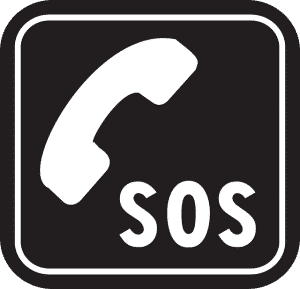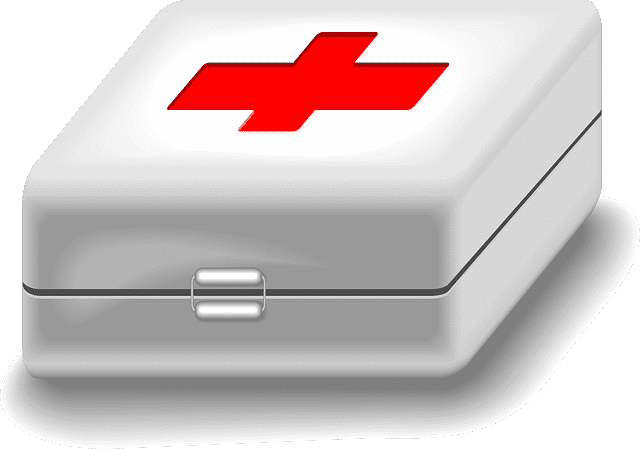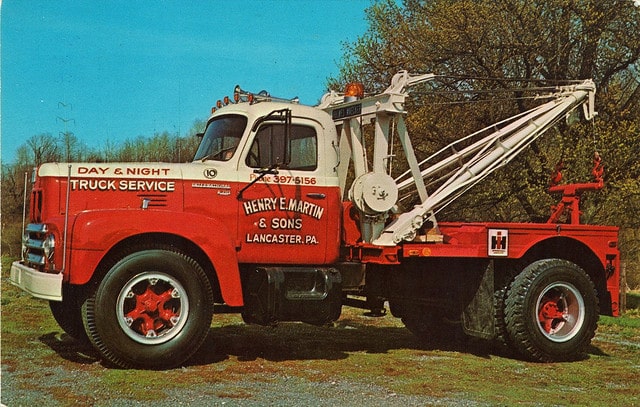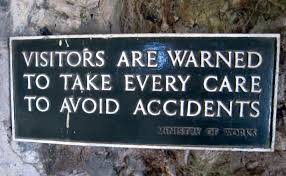Alaska Road Trip Emergency Preparedness:

Road trip planning worth it’s salt always factors in road trip emergency preparedness for things that might be outside of your control. With both isolation and distance that you’ll be facing on this journey, it’s important to consider the possibilities. Put simply, the road trip to Alaska is different from most other road trips. It involves a lot of miles, less than perfect road conditions, vast distances between populated areas and moderate possibility for something to go wrong. It’s certainly ideal, and even likely, that nothing will occur on the trip, but having a road trip emergency preparedness plan is simply wise.
We’ve actually encountered people making the trek from Alaska to the lower 48 that became stranded and were ill prepared. Quite literally, they were stranded a hundred plus miles from a town, had no decent clothes and only wore flip-flops they might have to walk 40 miles in. Oh, and sub freezing temperatures. Had we not showed up, prepared to change their tire, that situation could have made for a very bad day. Please, don’t be these people.
Imagine some of the following scenarios:
- Flat tire(s)
- Serious injury or medical condition
- Vehicle breakdowns
- Running out of gas
- Storms of a century
- Gear problems or failures
For the most part, if you plan well, you won’t have to face any major issues that could potentially ruin your trip of a lifetime. You do need to assess the situations you’ll be in and have the resources available to remedy any issues that come about. Road trip emergency preparedness involves thinking through the things that could go wrong, weighing their potential to impact your road trip and possibly coming up with solutions to prepare for the event.
Flat Tires on the Road Trip To Alaska
Even though the roads are pretty good along most of the routes used to get to and from Alaska, you can almost expect a flat tire at some point along the journey. Definitely prepare for that scenario in the worst possible circumstances. Be prepared to change the tire in the rain, on muddy ground in the dark, as it’s possible this issue could strike at the least opportune time. Emergency road trip preparedness can make incidents such as this a far more pleasant thing to deal with.
More than likely, a flat tire is the worst thing that will happen to you on your road trip to Alaska. It’s a relatively easy fix, but could be a major challenge to someone that doesn’t know how to change a tire. We suggest educating yourself before you have to face it.
Medical Issues:
 One thing you should be aware of, especially on a road trip to or from Alaska, is that there are vast distances involved where medical care is not an available option. It’s common to experience hundreds of miles between major services. In some of these areas, immediate medical attention may require helicopters and considerable costs to get care.
One thing you should be aware of, especially on a road trip to or from Alaska, is that there are vast distances involved where medical care is not an available option. It’s common to experience hundreds of miles between major services. In some of these areas, immediate medical attention may require helicopters and considerable costs to get care.
That said, the most important aspect of road trip emergency preparedness is to be careful. Most accidents are avoidable, but you need to remember the situation you’ll be in and that care might be hours away at any given time. Make sure you have good footing when taking walks, take care when working with sharp knives and ensure that anything that can hurt you is properly handled.
As far as a first aid kit, you should bring a decent kit that is well stocked and able to handle most minor and maybe even semi-major injuries. Most likely, you won’t need much more than a band-aid, but making sure you can deal with pain and perhaps a more serious injury should be considered. If you can, buy a decent first aid kit that is relatively complete and possibly augment it with items you expect to use more often, like pain medication and band-aids. Remember, if you’re 4 hours away from care and someone’s in pain, you’ll want a way to mitigate that as much as possible.
For any of you that might experience medical conditions that require ongoing medications, you will want to make sure you’re well stocked with what you’ll need, and maybe even some extras to handle a lost bag or something unexpected. Pharmacies are available in most major towns, but there are also considerations about international and inter-state prescriptions that you may want to investigate before leaving for your trip.
Vehicle Breakdowns:
 If taking the road trip, the vehicle you select is an important consideration. You want to make sure that you’re relatively current on maintenance and any major issues with your vehicle aren’t present before you set off. Even with the most adequate maintenance, there’s still the risk of a potential breakdown. The roads in some places are tough on vehicles and things occasionally can go wrong. Your road trip emergency preparedness plan should consider this what if scenario and how you might handle it.
If taking the road trip, the vehicle you select is an important consideration. You want to make sure that you’re relatively current on maintenance and any major issues with your vehicle aren’t present before you set off. Even with the most adequate maintenance, there’s still the risk of a potential breakdown. The roads in some places are tough on vehicles and things occasionally can go wrong. Your road trip emergency preparedness plan should consider this what if scenario and how you might handle it.
We recommend making sure that you have towing coverage that works both in Alaska and Canada. Many insurance policies provide towing and lockout coverage, so certainly check there first as you might have an inexpensive option all ready. Otherwise, you might want to look at maintaining a towing company membership, many of which also work in Canada.
Often times, towing coverage features coverage levels that limit how much towing distance is covered. Sometimes towing coverage is a more generic, “We’ll get you to an adequate repair facility for your vehicle.” The latter is much more favorable if you can get it, because frankly, there’s some places up north that “might” be able to fix your vehicle, but aren’t worth the risk.
Also make sure your insurance policy is up to date and provides the level of coverage you would need. We’re not saying it’s likely, but what would happen if you hit a large animal on your way or you got into a car accident? Could you get your car repaired or towed? Would it spell end of the trip and seeking a flight home? We don’t know what’s right, but the “what if” scenario should run through your mind so if something does happen, you have a plan in place.
Running Out Of Gas:
One word. Don’t.
There are some great distances involved between services on the road trip to Alaska and you won’t go wrong if you fill up when you can. It’s important when passing through areas that do provide services to know how far you are to the next services. Services can be very far apart in some places, no joke. The rule we use if the tank is only half full, topping off the fuel becomes a relative priority.
 That said, a jerry can full of fuel is on the must-have list of critical gear for road trip emergency preparedness when traveling to or from Alaska. Guaranteed, if you need fuel brought to you and you’re 150 miles from a gas station, it will be very expensive. The jerry can fuel insurance is well worth the relatively small price you’ll pay for it. A minimum of a 5 gallon can is recommended, however, more fuel efficient vehicles may get by with less. The point is you want to sustain maybe somewhere around 100 miles, just in case you do run out of fuel in a most inopportune location.
That said, a jerry can full of fuel is on the must-have list of critical gear for road trip emergency preparedness when traveling to or from Alaska. Guaranteed, if you need fuel brought to you and you’re 150 miles from a gas station, it will be very expensive. The jerry can fuel insurance is well worth the relatively small price you’ll pay for it. A minimum of a 5 gallon can is recommended, however, more fuel efficient vehicles may get by with less. The point is you want to sustain maybe somewhere around 100 miles, just in case you do run out of fuel in a most inopportune location.
As for where to store the jerry can, remember, you’re transporting fuel. There’s probably been thousands of incidents of fuel cans tipping over and spilling their contents, that’s not a contingency you want to deal with. If you can, external storage is ideal and it must be secure so it doesn’t go flying on a rough road or tight turn. If internal is your only option, maybe put it in a large plastic bag as an additive protection measure.
Storms & Weather:
 If you have the right gear, there’s not much that can happen that could truly derail your trip. With that in mind, we do recommend being prepared for a possibility of being forced from outside to take shelter. Your road trip emergency preparedness plan should allow you options if you need them.
If you have the right gear, there’s not much that can happen that could truly derail your trip. With that in mind, we do recommend being prepared for a possibility of being forced from outside to take shelter. Your road trip emergency preparedness plan should allow you options if you need them.
This plan could be as simple as a way to sleep in your vehicle. It may not be the most comfortable of nights, but you need to consider whether that’s a practical plan for you. If it’s not a workable plan, you will need the extra resources to make a hotel or cabin stay for a night or two. Your road trip emergency preparedness resources shouldn’t be so tight that you couldn’t afford emergency shelter if you need it.
As for low temperatures at night, we do recommend here having an adequate sleeping bag and clothing to maintain warmth in even semi-extreme conditions. Depending on the season you travel in, this could be a serious situation you might need to consider. Especially in the shoulder seasons, you could potentially face freezing conditions or even snow on the ground. Even a sudden summer cold snap could get things down to frost levels outside. Does your gear allow you to handle this or would you “go to ground” and seek indoor shelter for these scenarios?
Gear Problems:
 With proper maintenance and care, this probably isn’t a likely scenario, but something could happen. You don’t need to get too carried away on this possibility, like to the level of bringing secondary tents, sleeping bags and so forth. Just remember that the gear you have with you is all you’ve got and needs to be cared for like it’s your only one. Make sure your gear remains as dry as possible and that you’re always accounting for the gear when you set up and tear down so something isn’t inadvertently lost. Lost gear is one of the reasons we feel proper organization and outfitting is essential to the success of a trip of this magnitude.
With proper maintenance and care, this probably isn’t a likely scenario, but something could happen. You don’t need to get too carried away on this possibility, like to the level of bringing secondary tents, sleeping bags and so forth. Just remember that the gear you have with you is all you’ve got and needs to be cared for like it’s your only one. Make sure your gear remains as dry as possible and that you’re always accounting for the gear when you set up and tear down so something isn’t inadvertently lost. Lost gear is one of the reasons we feel proper organization and outfitting is essential to the success of a trip of this magnitude.
For some items, it’s just smart to have backups to the backups. Propane, lighters, sunglasses, food, beverages, things that will keep you warm or dry and essential food/water are the most critical of these things. Essentials should be doubled up on and stored separately, if possible, to avoid the “all your eggs in one basket” scenario. Think through what you’ll need and if you require it to survive, you’ll want to think about how you could get by without such an item until it could be replaced.
Extra Time:
It can be very difficult to plan out every aspect of a road trip like one to Alaska. There are a lot of unknowns and and road trip emergency preparedness can only take you so far. You might face major detours due to a fire or road construction, a serious vehicle issue or some other lengthy delay. Having additional time built into your schedules will help you deal with anything that does come up and will hopefully make your journey more pleasant. The best thing that can happen with any extra time you’ve built-in to your road trip is to have an opportunity to do something fun you didn’t know you wanted to do.
If you’re worried about making it back on time, remember that you can make up time by driving a lot of miles in a day. You just need to be aware of your schedules and itinerary that you put together in your planning efforts and push for more distance if you need to. That said, don’t back yourself into a corner where it will be impossible to return in the time you’ve allotted or where you have to take risks on the road (e.g. driving tired) that could end up even worse for you.
Other Comments on Road Trip Emergency Preparedness
Think about what could go wrong and bring what you think you need, but also try to avoid over-preparing for entirely unlikely scenarios. Some of this is unique to you and your situation, others might be common. The biggest thing is that you have enough spare resources, or a credit card, to get you through even the worst of situations. It is our hope that your trips will be just as successful as ours, but that you’re not caught unprepared should something strike out of the blue.
